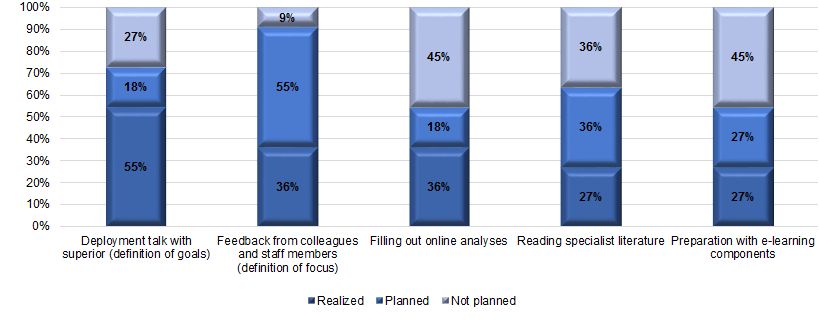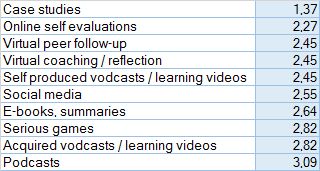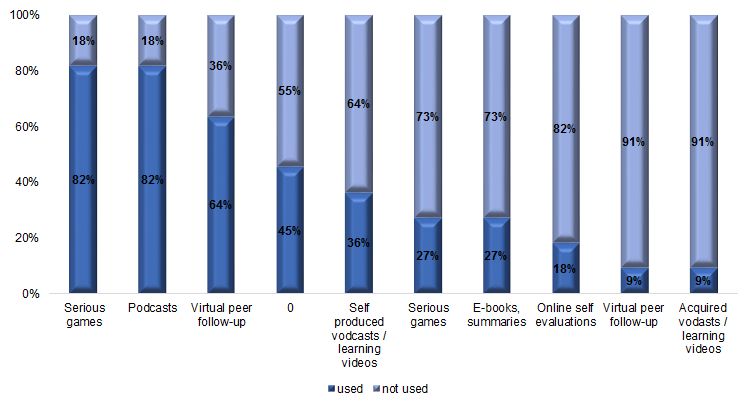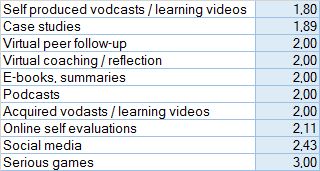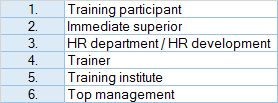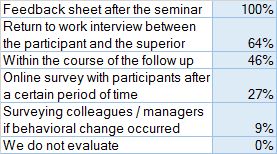Topic: Learning Transfer in Germany
In November 2013, MDI contacted 257 persons with an HR background, whereof 11 persons participated in the survey. 64% of the participants work in companies with more than 2000 employess. 91% of the companies operate internationally.
Employees‘ preparation for a training
A deployment talk with the superior in order to define the goals of the training takes place in 36% of the companies. 55% plan such a talk but do not realize it. 27%, respectively, get feedback from colleagues and staff members to define the training focus and / or prepare with e-learning components. A majority of 55% reads specialist literature beforehand.
Importance of learning technologies for soft skills trainings
Based on a range of 1 (very important) to 4 (not important), case studies range best with a value of 1,73, followed by online self evaluations (2,27) and virtual peer follow-up, virtual coaching/reflection and self produced vodcasts / learning videos with 2,45 each. A small majority considers social media important or very important, whereas more than 50% of the surveyed persons consider new learning technologies such as acquired vodcasts / learning videos, serious games, podcasts und E-books rather not important or not important at all.
Deployed learning elements
Although more than 90% consider the use of case studies important or very important, only 45% use case studies in their company. Online self evaluations and podcasts are the leaders with 82% each, whereas virtual coaching / reflection and acquired vodcasts / learning videos bring up the rear with 9% in each case. Self produced vodcasts / learning videos are employed by more than half of the companies. In contrast, E-books, summaries, social media and virtual peer follow-up are used only by a minority.
Self produced vodcasts / learning videos lead in terms of contentment, followed by case studies. The respondents are rather unsatisfied only with serious games. (1= very important; 4 = not impportant)
Responsibility for learning transfer
Here you can find a list of who the interviewees think has most responsibility, listed by importance from 1 to 6. The respondents attribute the most responsibility for learning transfer to the participant of a training, followed by the immediate superior. The least responsibility is attributed to the top management. (1= very important; 4 = not impportant)
Transfer success review after the training
All companies review the learning success after the training with a feedback sheet, 64% in a return to work interview between the participant and the superior, 46% within the course of the follow up, 27% with an online survey with participants after a certain period of time and 9% by surveying colleagues / managers if a behavioral change has occurred. (1= very important; 4 = not impportant)
About the survey participants

